Black Atlantic
Power, People, Resistance
A major new exhibition explores Cambridge's role in slavery, the people it affected and their resistance to it, through fine art, technology and even everyday objects.
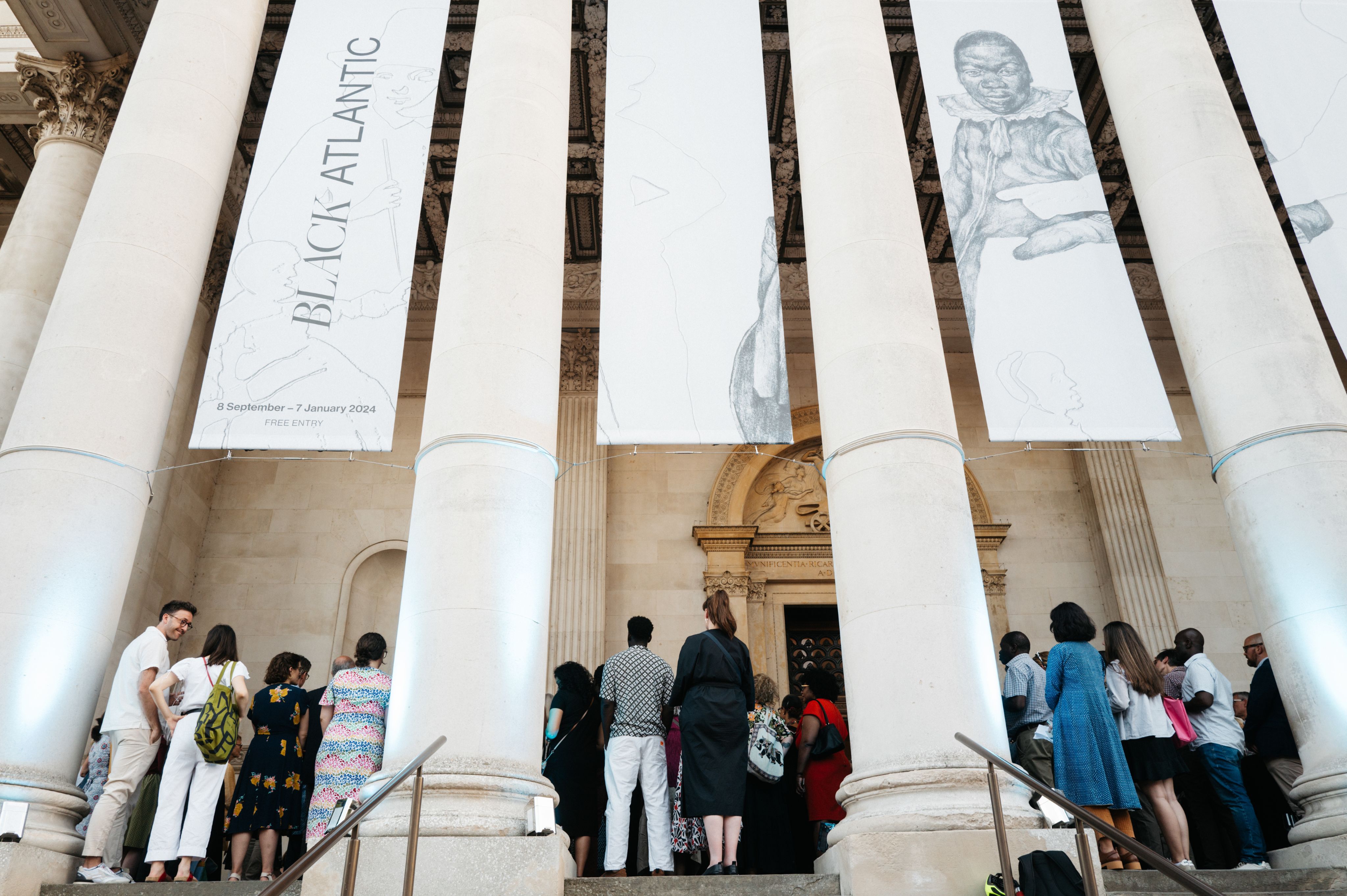
An important new exhibition, 'Black Atlantic: Power, People, Resistance' (8 September 2023 - 7 January 2024) has opened at The Fitzwilliam Museum.
Bringing together collections from across the University of Cambridge’s museums, libraries and colleges with loans from around the world, the exhibition asks new questions about Cambridge’s role in the transatlantic slave trade and looks at how objects and artworks have influenced history and perspectives.
Curated by Dr Jake Subryan Richards and Dr Victoria Avery, visitors can experience historic artwork alongside works by contemporary artists, whose pieces seek to challenge long-held assumptions, address erasures and create alternative narratives of repair, freedom and justice.
"What's exciting and innovative about these collections is that we're uncovering new stories through a process of historical research and then presenting these stories in a way for all audiences to come together to talk about them."
Colonial enslavement affected every part of the Atlantic world and the objects on display reveal the wealth that Cambridge drew and continues to draw, from Atlantic enslavement. They also demonstrate that people always resisted oppression. In resisting colonial slavery, people produced new cultures that continued to shape our world. These cultures are known as the Black Atlantic.
The exhibition is presented in the Museum's historic historic galleries, themselves partly funded by the profits from the transatlantic slave trade.
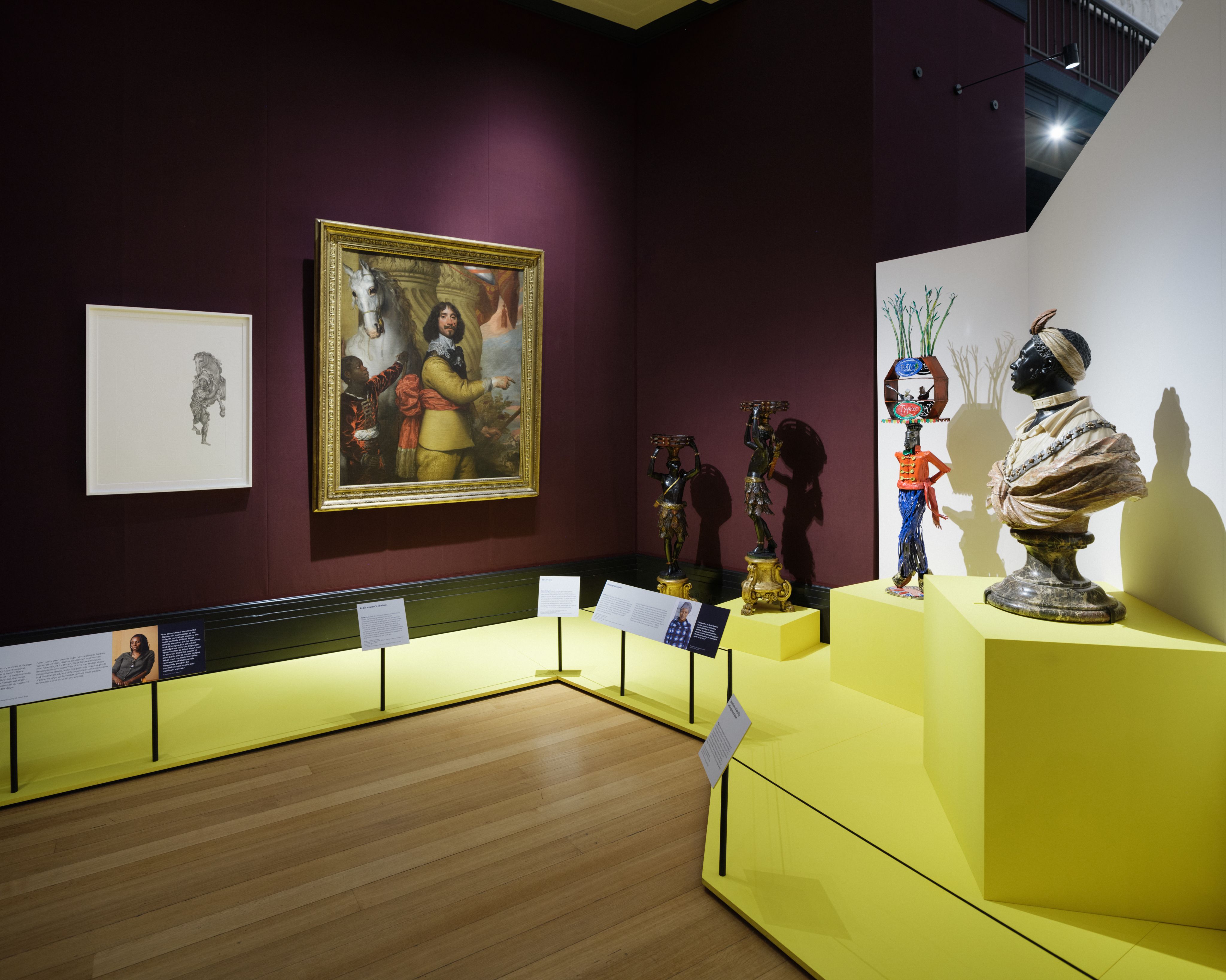
The Black Atlantic exhibition in the Fitzwilliam Museum galleries
The Black Atlantic exhibition in the Fitzwilliam Museum galleries
"To see the original galleries disrupted and reconfigured in this way, the installation is indicative of what we're trying to do more broadly, making people rethink what they think they know. This is a building many of our visitors know and love and this is making them see it in a new light. It's something that appears familiar but we see it differently, and this is exactly what we're doing with all these objects."
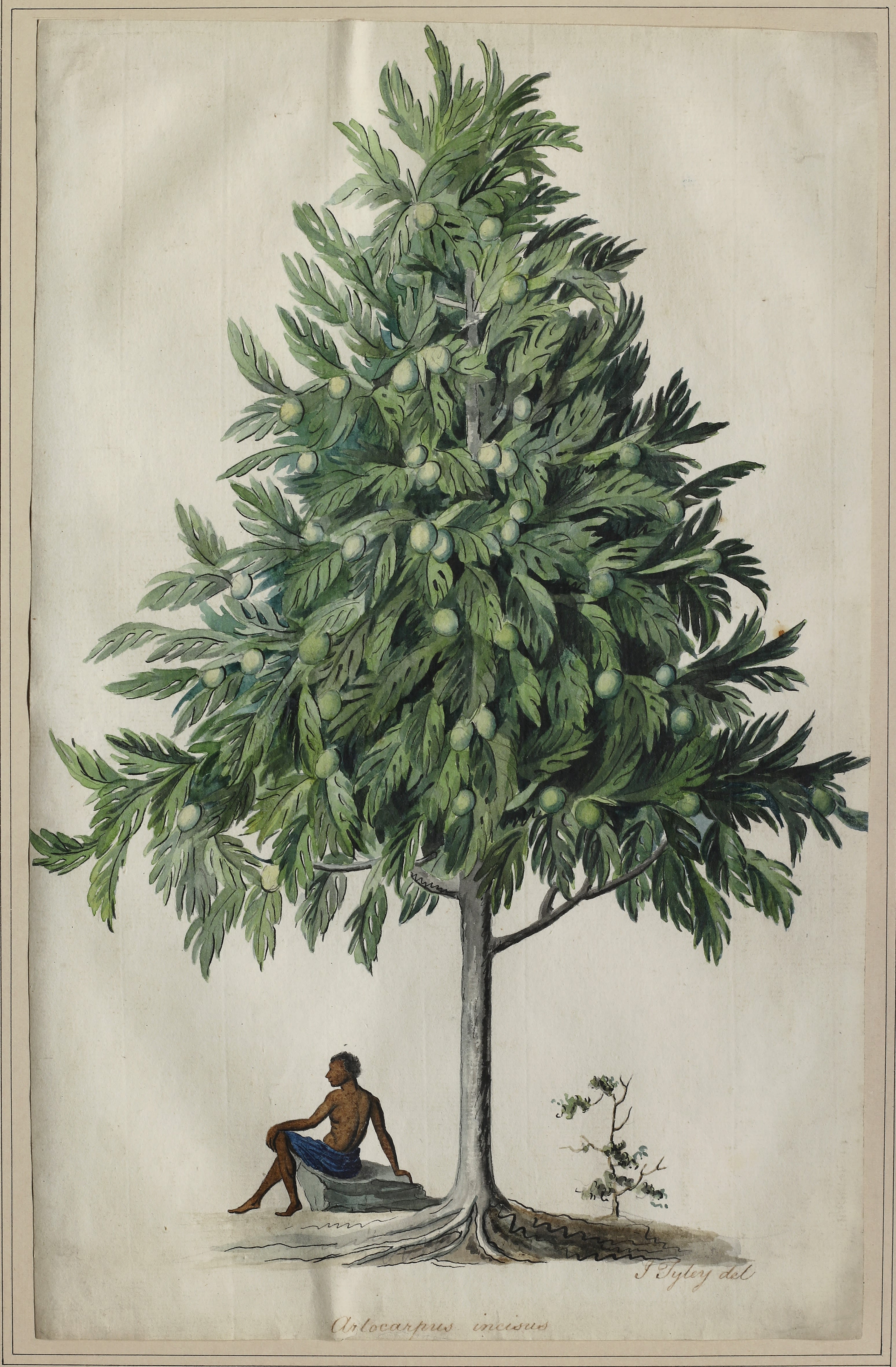
John Tyley, Breadfruit Tree (Artocarpus incisus), c. 1793-1800. Permission of The Linnean Society of London
John Tyley, Breadfruit Tree (Artocarpus incisus), c. 1793-1800. Permission of The Linnean Society of London

John Tyley, Breadfruit Tree (Artocarpus incisus), c. 1793-1800. Permission of The Linnean Society of London
John Tyley, Breadfruit Tree (Artocarpus incisus), c. 1793-1800. Permission of The Linnean Society of London
Blackness before slavery
West Africa, the Caribbean and Europe had independent histories before being connected through the violence of transatlantic enslavement. Each had complex social and material cultures.
In sub-Saharan West Africa, people formed political communities with extensive agricultural systems, long-distance trade networks and rich cultural lives. In the Caribbean, the diverse Indigenous peoples developed their own artforms and sophisticated political systems.
We can still glimpse these worlds through the objects these people made and those that collectors have given to Cambridge institutions.

Akan goldweights
Among the great cultures of sub-Saharan West Africa were the Akan — a linguistic group comprising the Asante, Fante, Brong, Akyem, Akwapim, Akwamu, Kwahu, Aowin, Wassa, Assin, Denkyira, Sehwi and the Adansi ethnic groups of present south-western Ghana and south-eastern Côte d’Ivoire. Over centuries, the Akan mined gold, and sold it on vast trading routes across the Sahara Desert.
From the 1400s, they developed a system of ‘mmbramm ’, or goldweights, to measure gold dust, the Akan currency. Goldweights were acquired by both Dutch and British colonial collectors, but in the late nineteenth and early twentieth centuries they were also gathered by Black collectors.
"Akan goldweights had roles extending far beyond their functional one. [They] embody enormous cultural significance, which is as enduring as the metal from which they are cast."
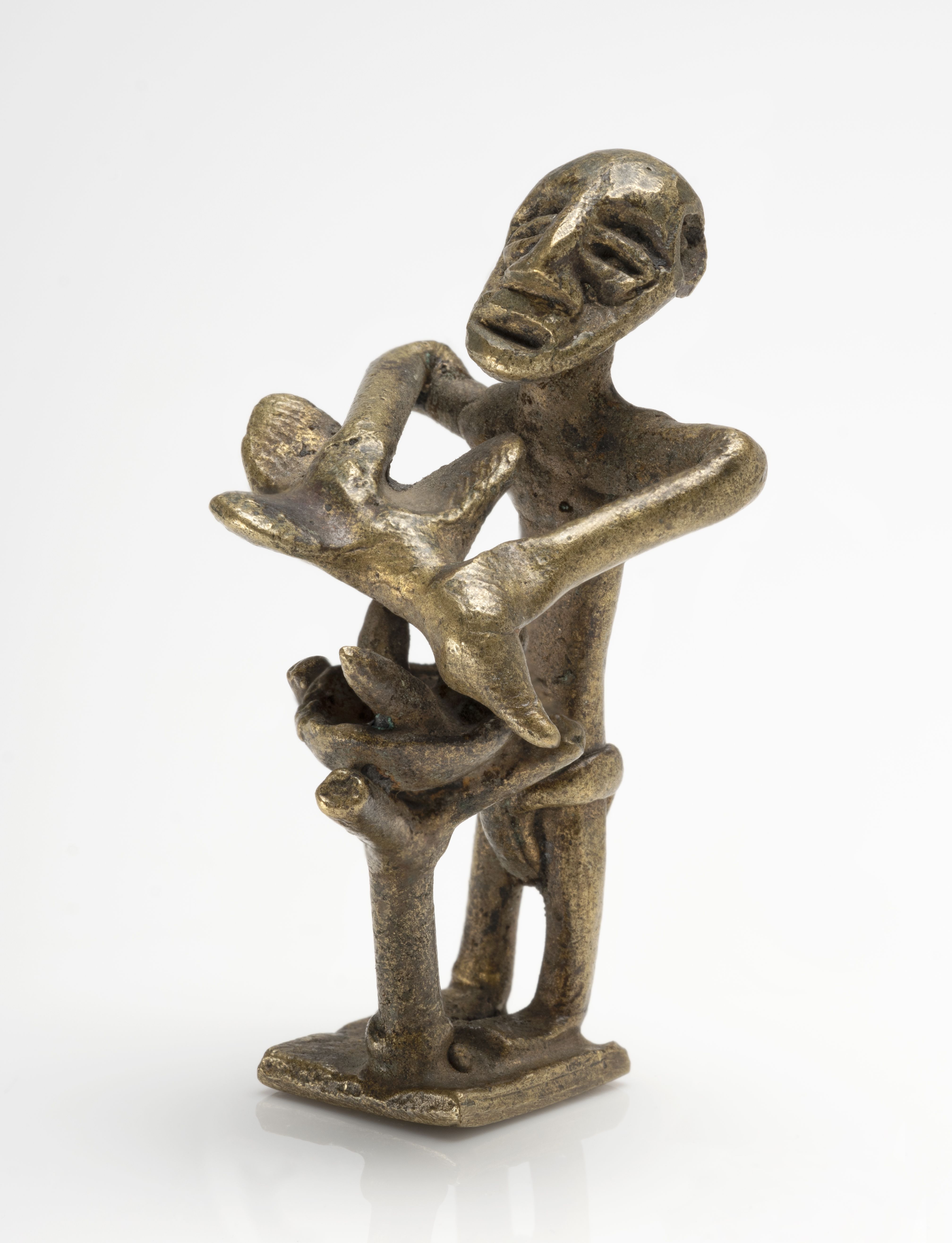
Akan gold weights. Museum of Archaeology and Anthropology, Cambridge
Akan gold weights. Museum of Archaeology and Anthropology, Cambridge (MAA ID)
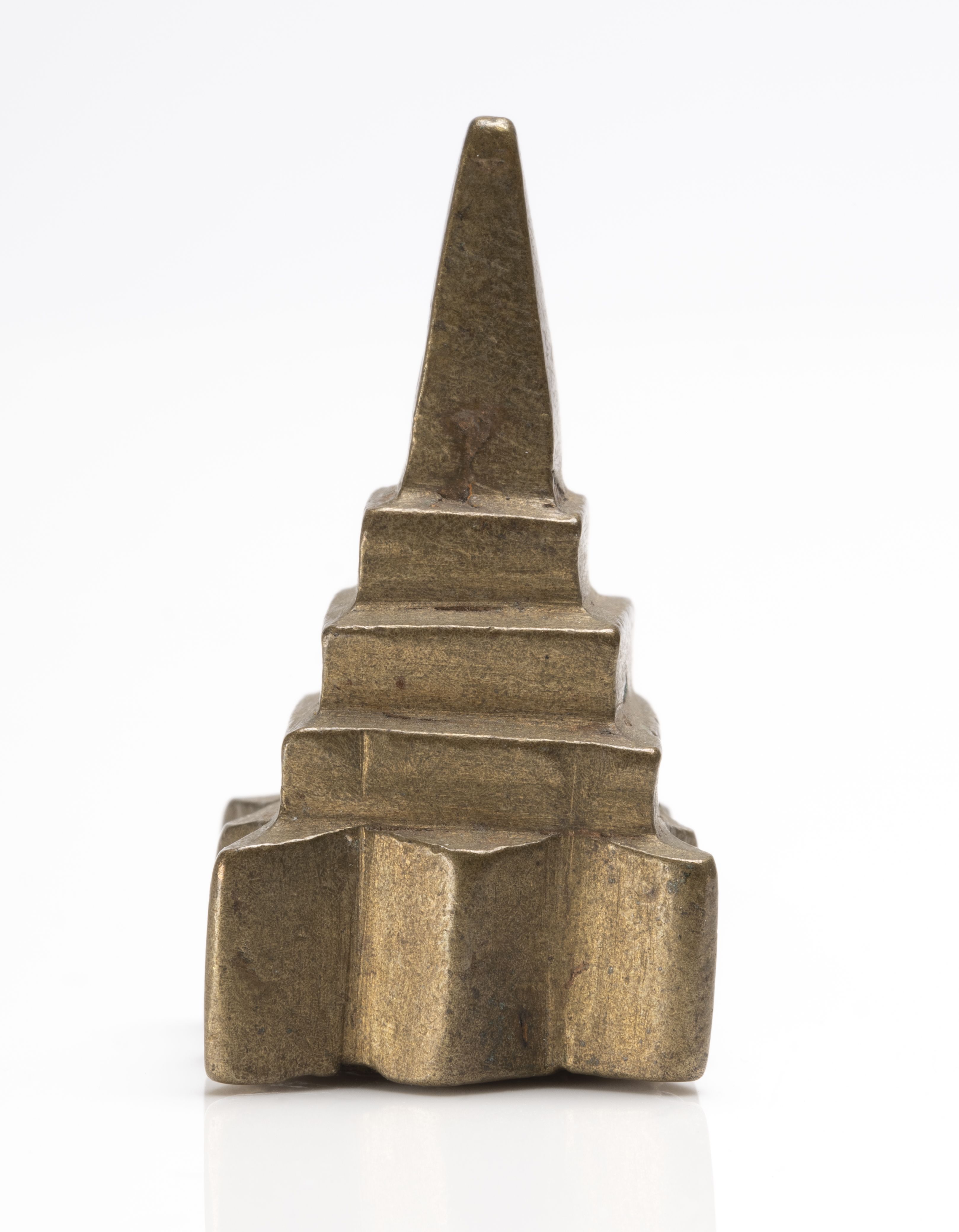
Akan gold weights. Museum of Archaeology and Anthropology, Cambridge
Akan gold weights. Museum of Archaeology and Anthropology, Cambridge (MAA ID)
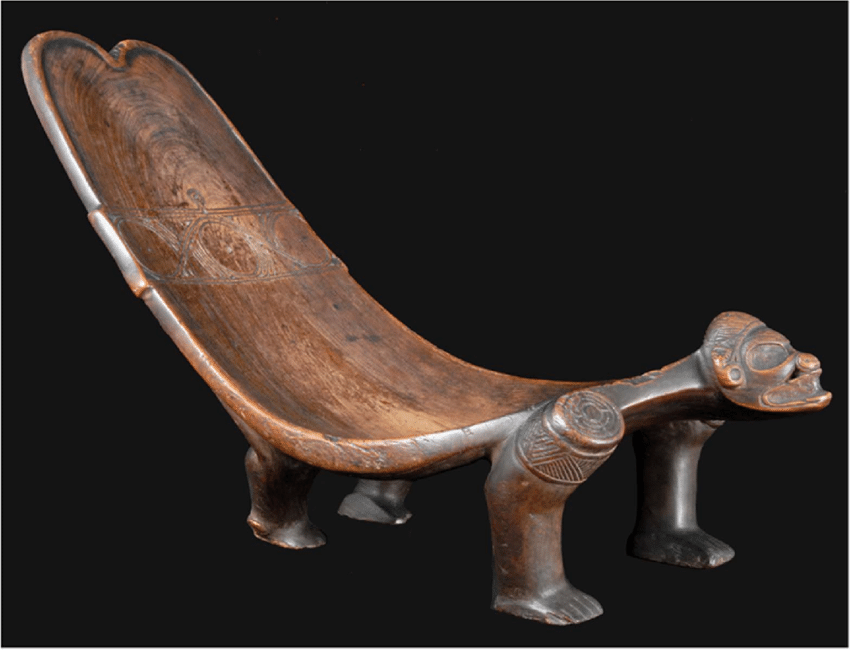
Unrecorded Indigenous Caribbean maker/s Duho. Ceremonial seat for a leader. 14th century. Musée du Quai Branly - Jacques Chirac
Unrecorded Indigenous Caribbean maker/s Duho. Ceremonial seat for a leader. 14th century. Musée du Quai Branly - Jacques Chirac
Duho ceremonial seat
This ‘duho’ or ritual seat was made at the height of Taíno culture (1000s— 1500s) on the island now home to Haiti and the Dominican Republic. A creature that is part-human and part-animal stands on all fours. In bold curving lines, the sculptor has dressed the creature in a cotton belt around its middle, an object of great value that chiefs gave each other as gifts. Taíno people gathered around this wooden throne for political and spiritual ceremonies.
Magnificent wood sculptures played a key role in society and speak of people’s interactions with their habitat. The ‘cacique’ (leader) would sit in a ‘duho’ to witness the ‘batey’ (or ball game) and also during the ‘cohoba’ ritual.
"Magnificent wood sculptures played a key role in society and speak of people’s interactions with their habitat."
A man of status
Before the era of transatlantic enslavement, European artists rarely portray black people yet when they do they usually depict them as real people, honourable individuals and in a variety of roles.
'Portrait of an African Man' is the earliest known artwork of a Black person in European Art. In it we see the Dutch artist Jan Mostaert drawing attention to the man’s gloved hands and what he holds: a sword and a luxurious bag — both signs of wealth and high status.
This portrait suggests the wide-ranging roles that Black people played in Europe before the era of transatlantic enslavement. The man’s identity is uncertain but he may be Christophle le More, an archer and bodyguard to the Holy Roman Emperor Charles V.
“It’s poignant and tragic that after this point we have so few European images of black people that are not demeaning, racialised stereotypes.”
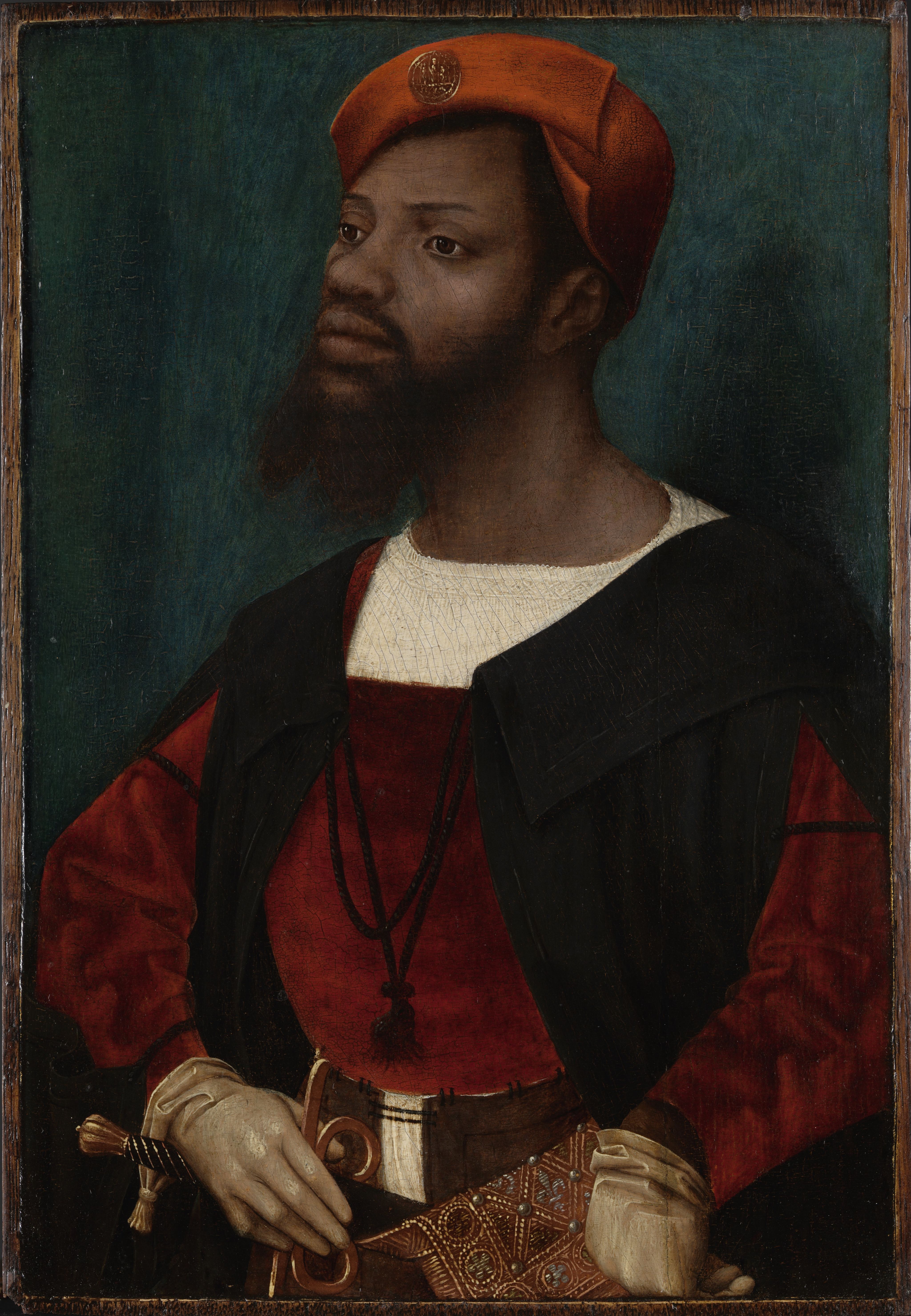
Jan Jansz Mostaert, Portrait of an African Man, c. 1525-30. Rijksmuseum, Amsterdam
Jan Jansz Mostaert, Portrait of an African Man, c. 1525-30. Rijksmuseum, Amsterdam
Atlantic enslavement
Between the Dutch Republic's first break from the Spanish Empire in 1566 and the global age of revolutions in the later eighteenth century, the world of Atlantic enslavement expanded and deepened dramatically. In the 1600s and 1700s, enslavement permeated daily life in Britain. From the punch people drank and the money they bought it with, through to the wood behind Rembrandt's paintings - all were products of slavery, hiding in plain sight.
Within this exhibition, we turn our gaze to look again at these everyday items through the lens of colonisation, and reveal the oft-untold stories that sit behind them.
As slavery and the idea of the inferiority of Black people became the norm, racist depictions also emerged and became acceptable. Images that showed noble and wealthy Black people such as that of the 'Portrait of an African Man', were replaced with artwork showing them in servitude, as objects of possession or even as furniture.
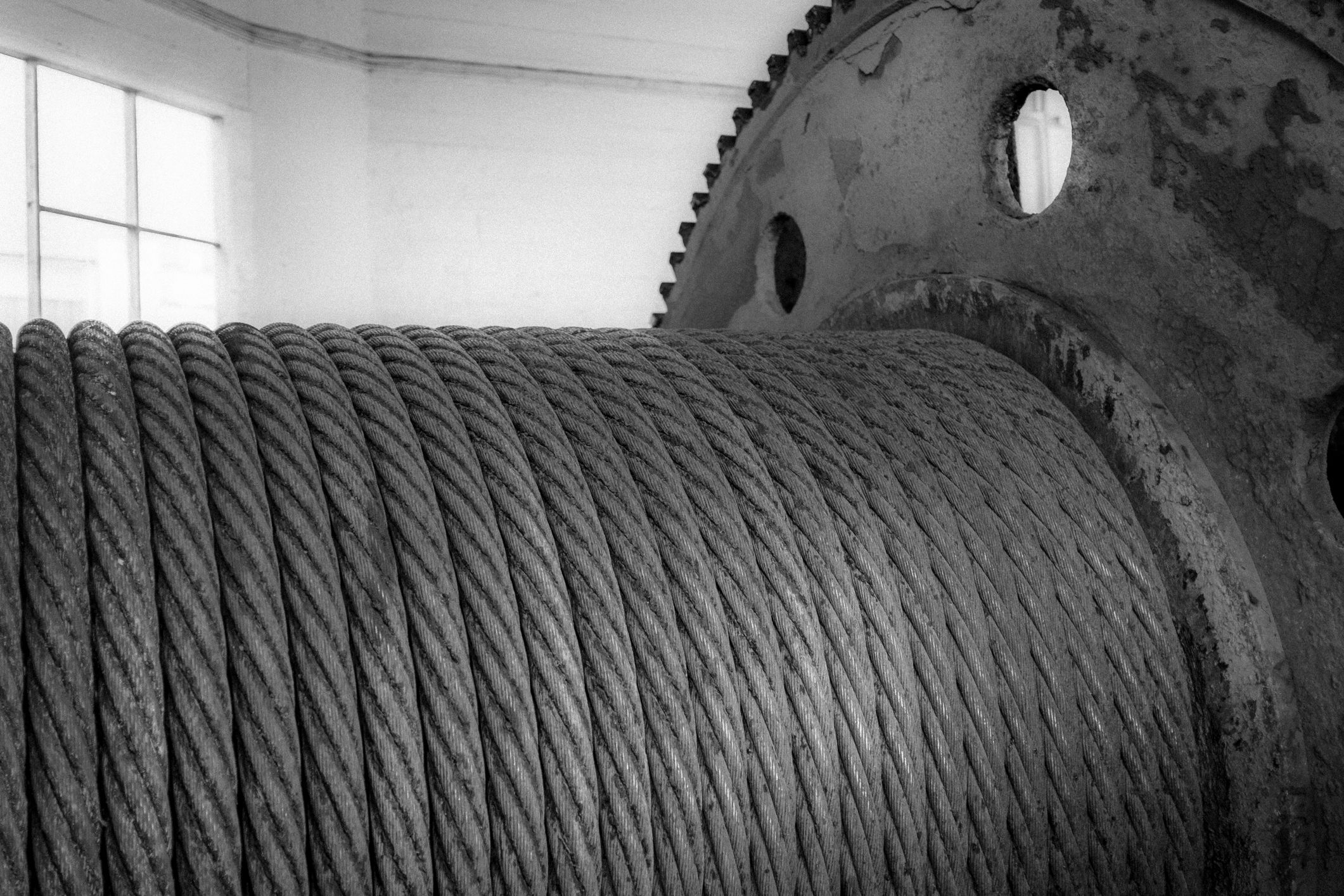
Royal patronage
Look closely underneath the heads of these three British monarchs depicted in gold coins from the 1600s. Sitting just at the bottom of Charles II, James II and William III, you'll be able to make out a tiny elephant with a castle on its back.
This symbol indicates that the gold used in these coins was mined by enslaved people in West Africa and came to the Royal Mint via the Royal African Company (RAC), which Charles II helped to establish.
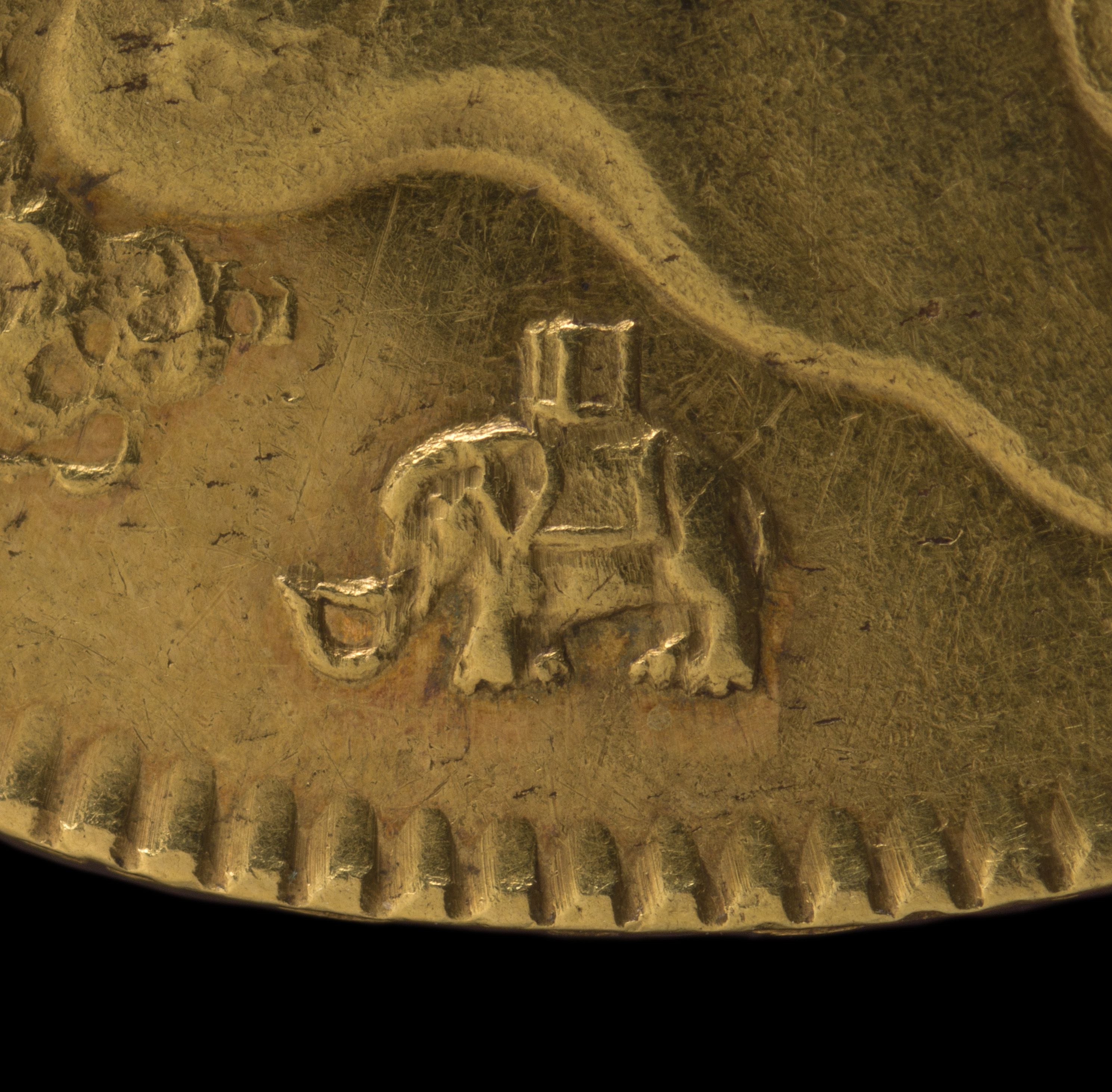
A close up of the Royal African Company logo underneath the monarchs heads.
A close up of the Royal African Company logo underneath the monarchs heads.
The RAC was the single largest contributor to the transatlantic trade in enslaved African people, shipping in the region of 150,000 - 160,000 captives between 1672 and 1731.
The Company held the right to coin African gold into guineas - the largest denomination in the English coinage.
A further nod to a racist backstory of this particular currency is the name itself - 'guinea' comes from the 17th century word for Africa.
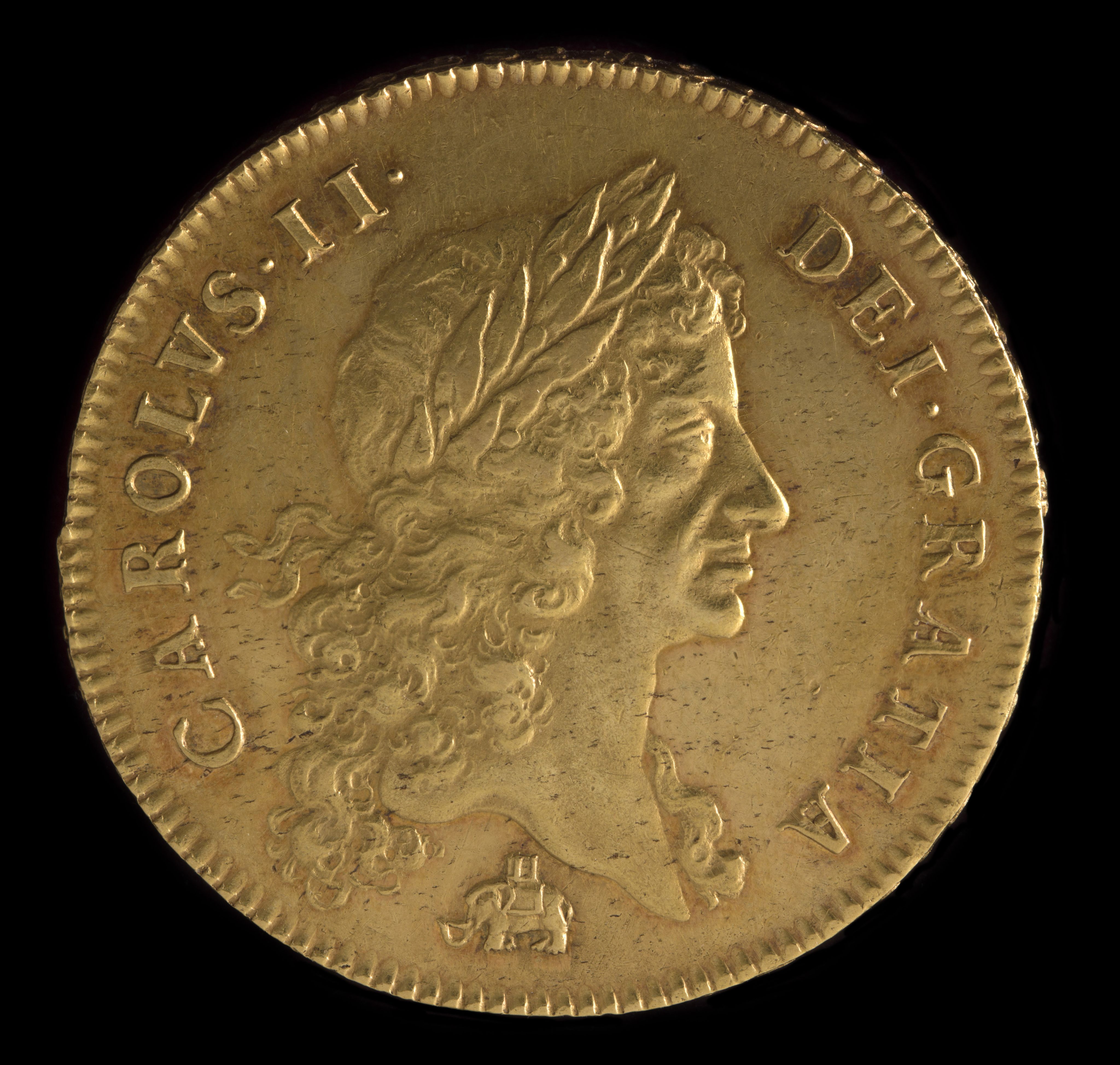
The Royal Mint, London. Five guinea coin with the head of Charles II
The Royal Mint, London. Five guinea coin with head of Charles II
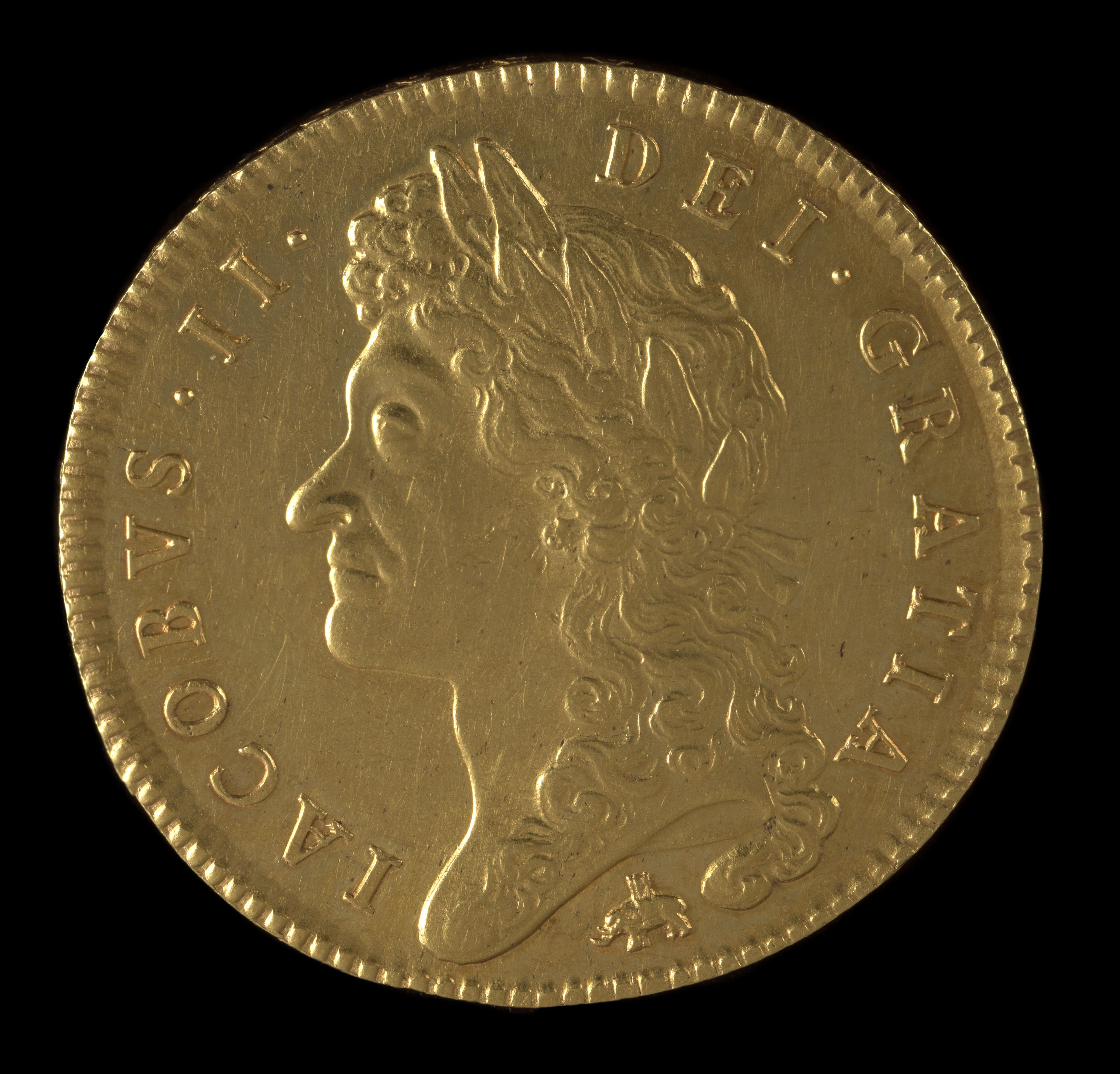
The Royal Mint, London. Five guinea coin with the head of James II
The Royal Mint, London. Five guinea coin with the head of James II
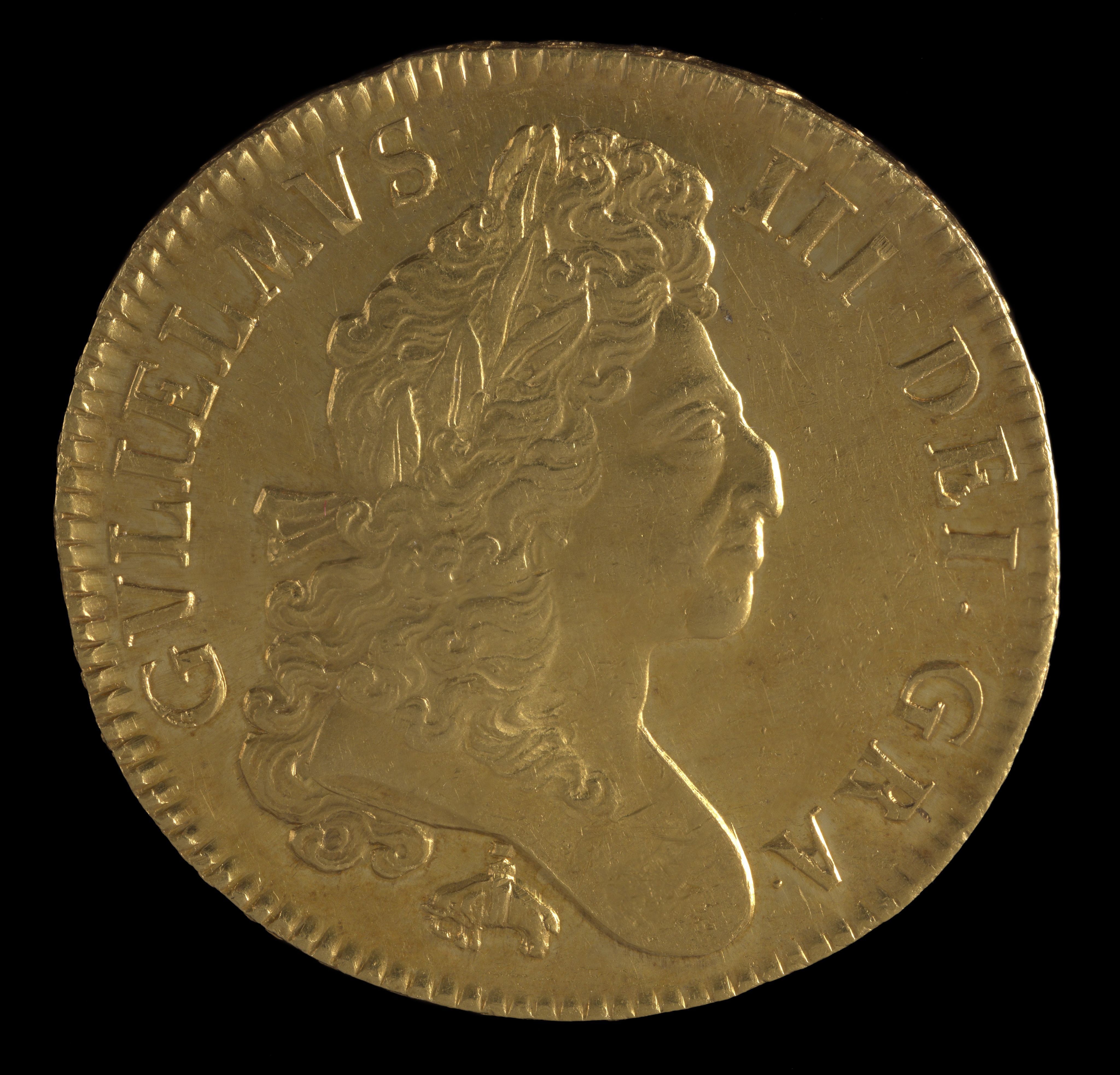
The Royal Mint, London. Five guinea coin with the head of William III
The Royal Mint, London. Five guinea coin with the head of William III
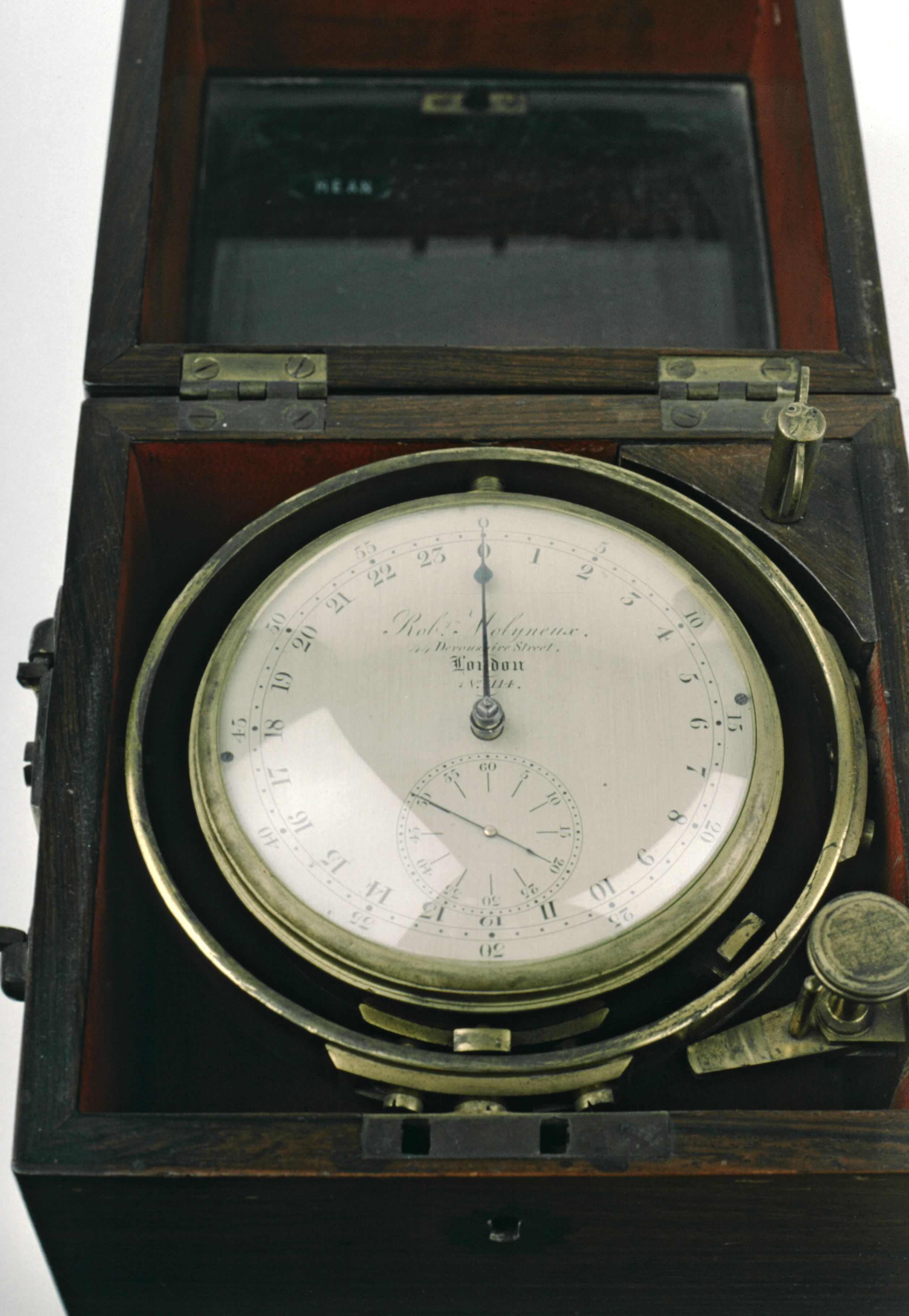
Robert Molyneux. Two-day marine chronometer. Whipple Museum of the History of Science
Two-day marine chronometer, Robert Molyneux. The Whipple Museum
The longitude problem
In 1714, Parliament offered enormous cash prizes for a solution to calculating longitude at sea - a vital aid to navigation.
The British Longitude Act proposed the instrument be tested 'from Great Britain to any such Port in the West-Indies' - the chief destination of slaving vessels.
"Without slavery, there is no Longitude Act of 1714. The British Government's interest in improving the navigation of ships at sea was inextricable from Britain's firm commitment to an economy built on the backs of enslaved people."
The chronometer, which can measure time despite temperature changes and unpredictable waves at sea, became the ultimate solution.
This one pictured, manufactured in London, is encased in mahogany produced by enslaved people.
Enslavement and fashion
As drinking tea, coffee and hot chocolate, and smoking tobacco, became commonplace, the wealthy in Britain began to buy beautifully designed items to store them in.
The materials from which they were made, such as mahogany, silver and tortoiseshell, are all the products of enslaved people's work. These items have long been valued, collected and admired - but often uncritically and without consideration of the violence it took to make them. When we consider it closely, this snuffbox paints a clear picture of colonisation:
- Crafted from luxury tortoiseshell likely imported from the Caribbean.
- Filled with tobacco from the Americas.
- An image portraying an aristocratic European being brought hot chocolate - made from Central American cacao and enslaved-produced Caribbean sugar.
- She is attended by a Black servant who is kept in the background.
- The Black servant is wearing yellow 'Indian' livery and would have been considered as 'exotic' as the chocolate, sugar and tobacco.
"We're asking people to look at why items like this are problematic. We constantly see images like this where the white person is superior, they're literally in the light, in the foreground whilst the Black person is on a smaller scale, is diminished, is pushed into the background. And this then becomes part and parcel of everybody's daily mindset."
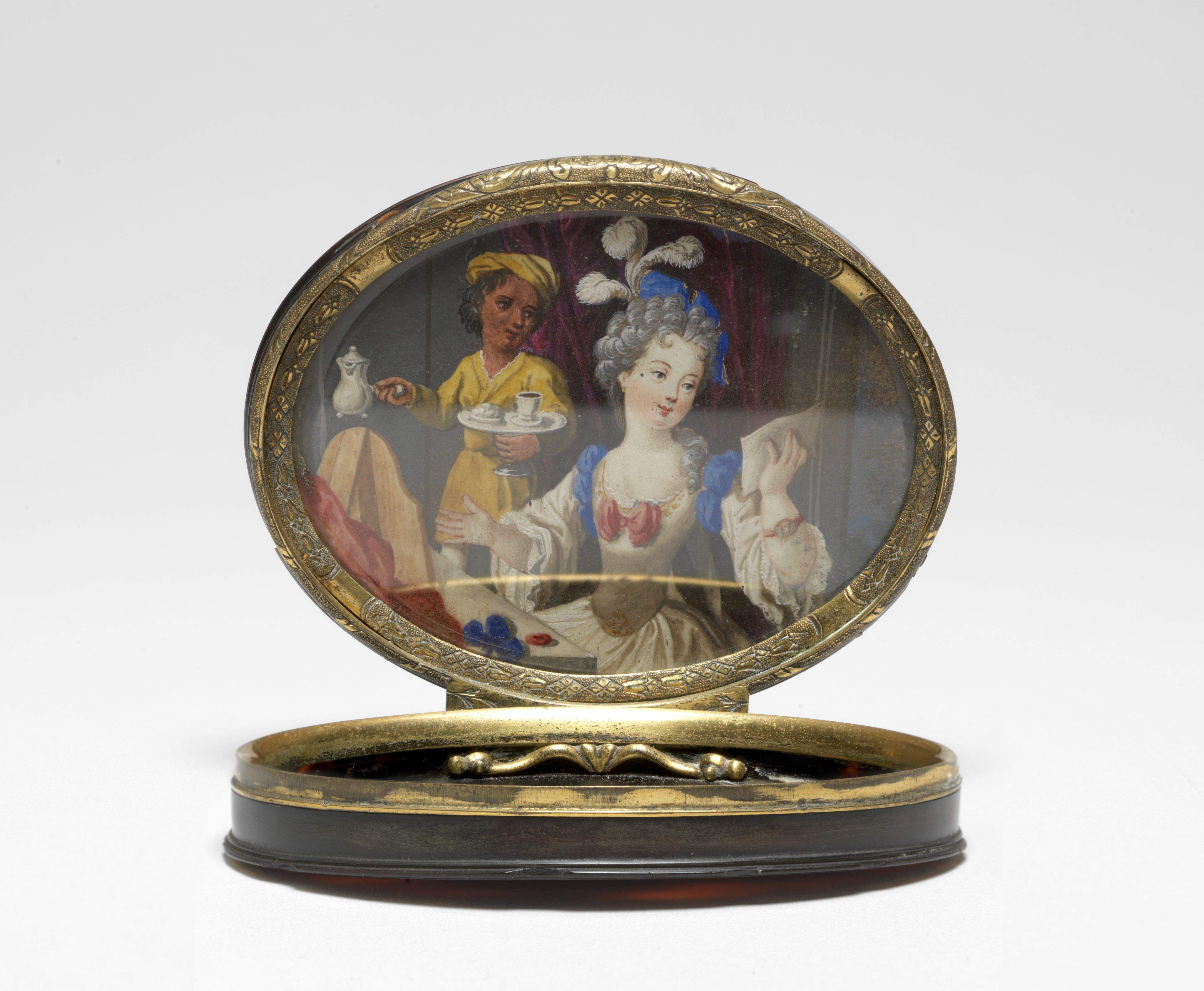
Snuffbox with gold piqué point work and interior vignette under glass, c. 1730-60.
Snuffbox with gold piqué point work and interior vignette under glass, c. 1730-60.
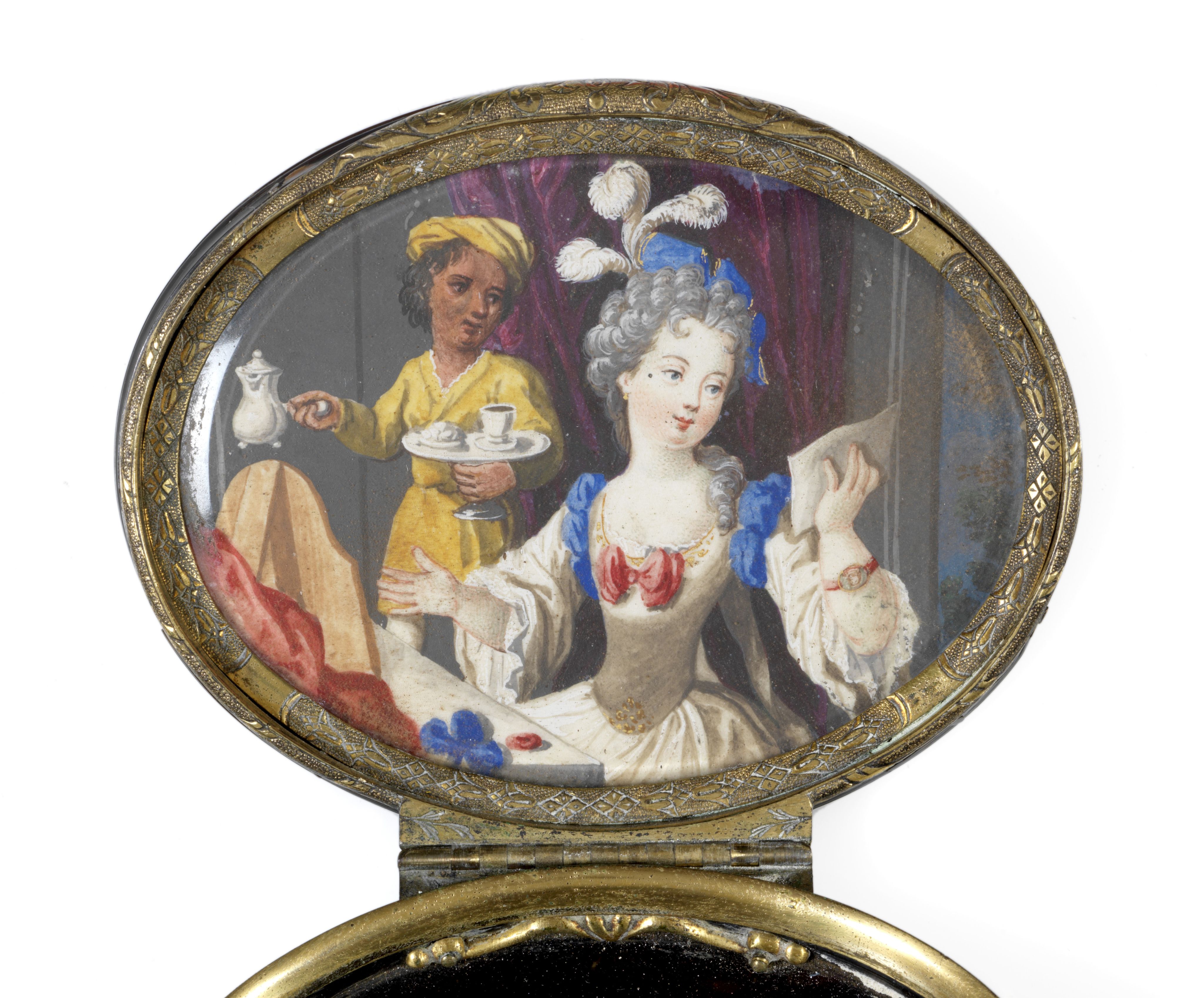
Snuffbox with gold piqué point work and interior vignette under glass, c. 1730-60.
Snuffbox with gold piqué point work and interior vignette under glass, c. 1730-60.
Contemporary narratives
The writing of history has always been about choice and omission, about the stories a dominant culture emphasises and those it neglects. Visual and material culture are integral in shaping narratives that can be used to justify and reinforce biases.
The contemporary artworks on display in this exhibition seek to respond to historic pieces, confront them, and in doing so challenge viewers' assumptions in order to create alternative narratives of repair, freedom and justice.
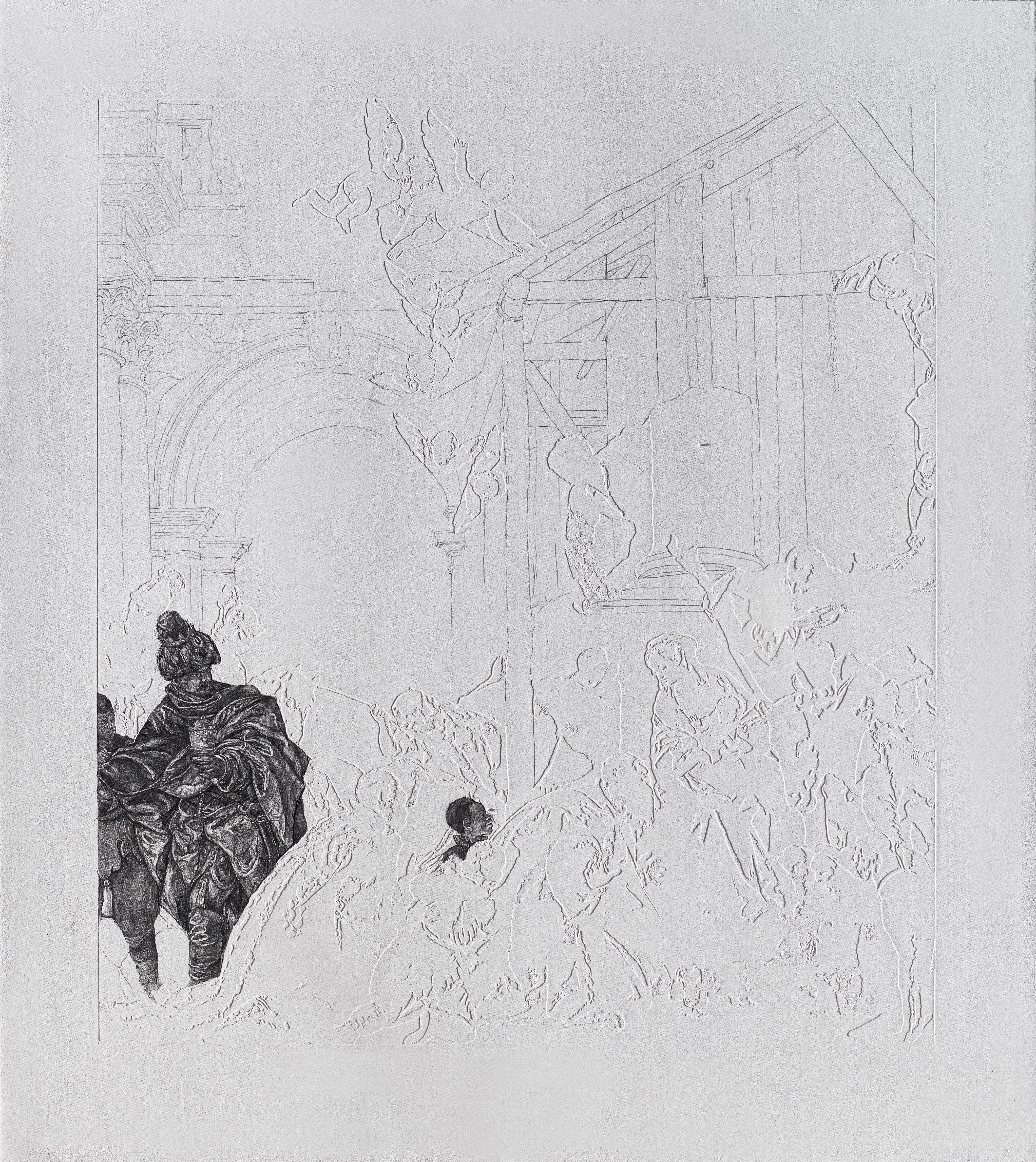
History at the dinner table
In 2021, New York-based Jamaican artist Jacqueline Bishop created a dinner service recalling her Jamaican grandmother's prized bone china crockery which, whilst 'painted with bright, cheerful carriages and palaces, hid a violent history of slavery and colonialism.'
Her plates show the horrors of plantation violence but also emphasise the dignity and fortitude of the enslaved - particularly women - by deliberately framing them with beautiful Caribbean fauna.
Much of the inspiration for 'History at the Dinner Table' came from Captain John Stedman's graphic book, 'Narrative, of a five years' expedition, against the revolted negroes of Surinam, in Guiana'. The book contains brutal images of women, including one being flogged naked onboard a slave ship.
Through her ceramic plates Bishop intends to give the women depicted back some hope and salvation by taking those images and wrapping them in flowers and nature.
"My plates are an attempt to address the inhumanity of the institution of slavery. For while I am seduced by the beauty of the China plates of my childhood...I also seek to imbue the women on my plates with beauty, dignity and humanity."
Watch below as Jacqueline Bishop discusses her work and the exhibition alongside Co-Curator Dr Victoria Avery, the Fitzwilliam's Keeper of European Sculpture and Decorative Arts.
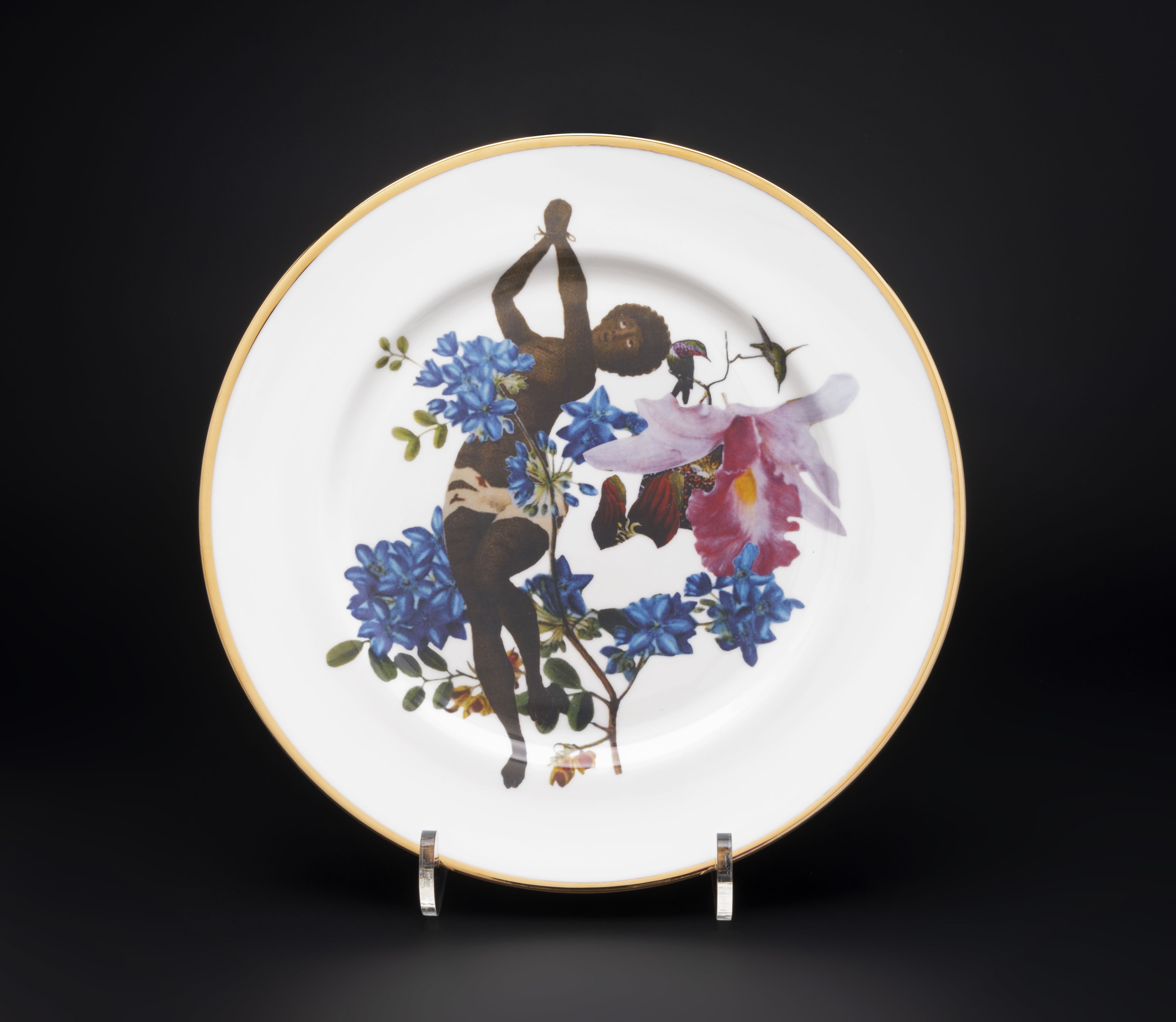
Jacqueline Bishop, History at the Dinner Table, 2021. © Jacqueline Bishop. Photograph © The Fitzwilliam Museum, Cambridge
Jacqueline Bishop, History at the Dinner Table, 2021. © Jacqueline Bishop. Photograph © The Fitzwilliam Museum, Cambridge
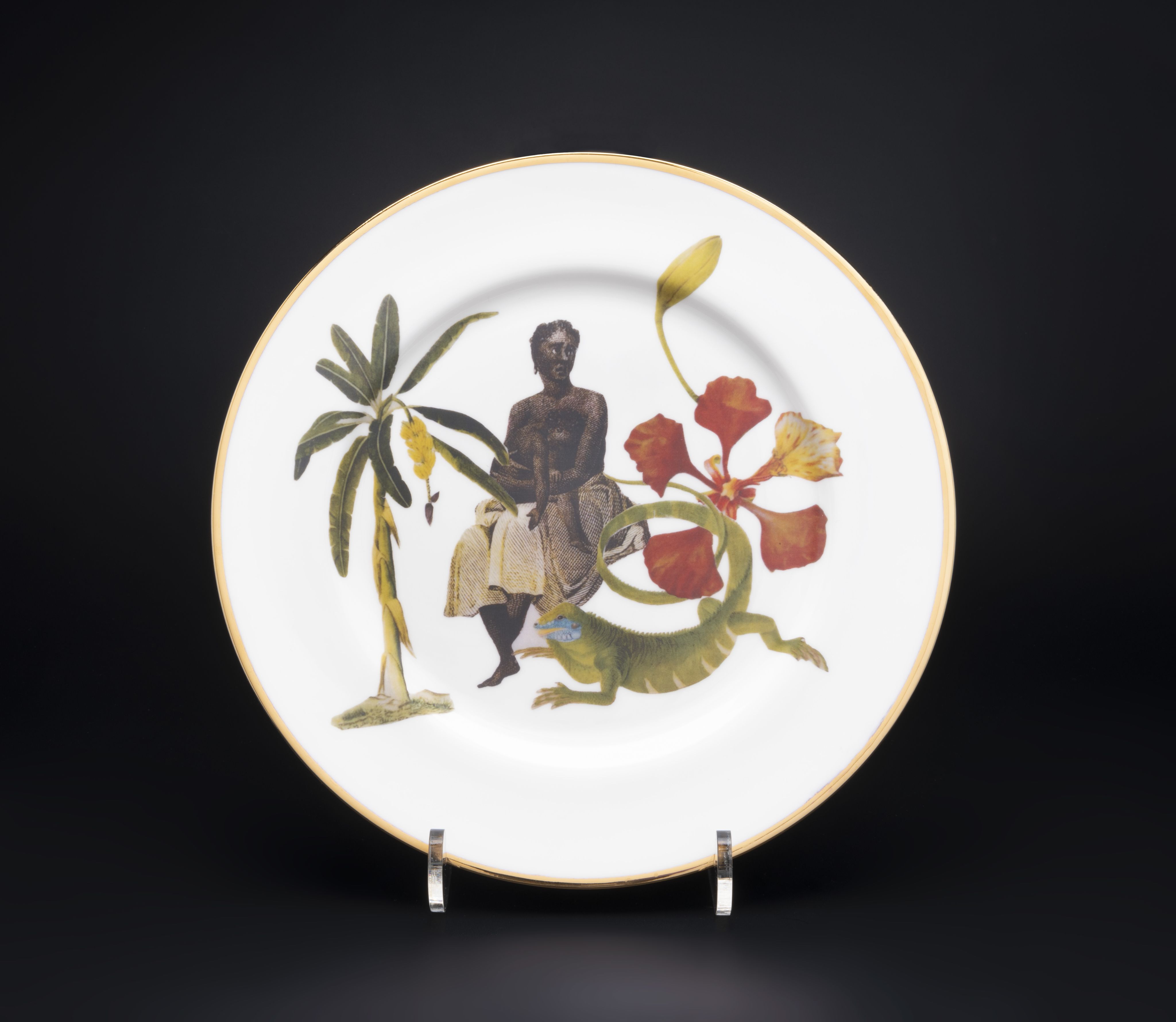
Jacqueline Bishop, History at the Dinner Table, 2021. © Jacqueline Bishop. Photograph © The Fitzwilliam Museum, Cambridge
Jacqueline Bishop, History at the Dinner Table, 2021. © Jacqueline Bishop. Photograph © The Fitzwilliam Museum, Cambridge
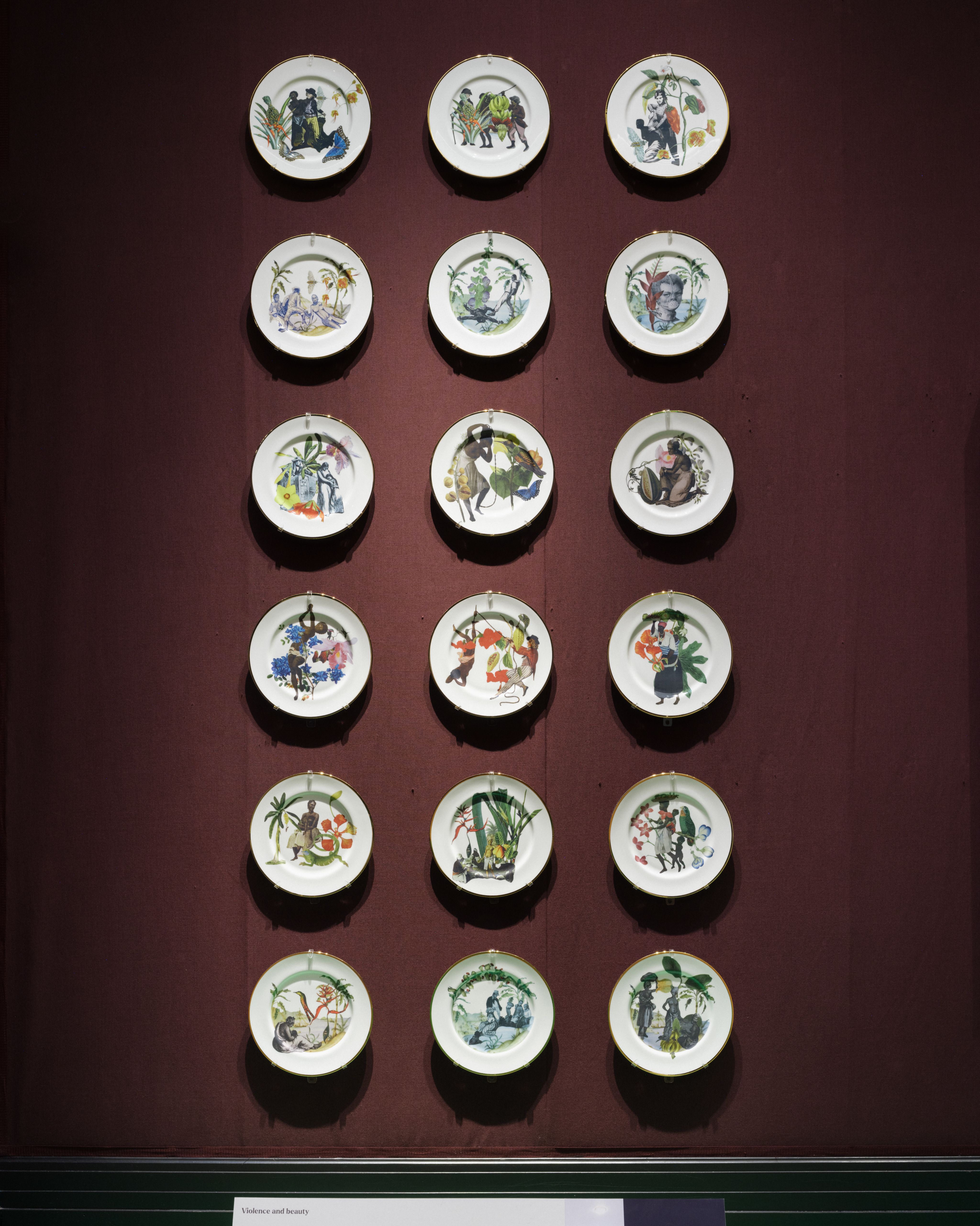
Jacqueline Bishop, History at the Dinner Table, 2021. © Jacqueline Bishop. Photograph © The Fitzwilliam Museum, Cambridge
Jacqueline Bishop, History at the Dinner Table, 2021. © Jacqueline Bishop. Photograph © The Fitzwilliam Museum, Cambridge
Representing erasure
“In Renaissance Europe, there were lots of Black people who were generally either enslaved people, servants or both. With that in mind, I looked at Old Master paintings and prints to see how the Black subject is represented within the Western canon. A lot of viewers don’t even see the Black figures in the original paintings. The conversations are about perspective, composition, colour, but the Black figure is rarely discussed. I find that problematic.
The Vanishing Point and Marking the Moment series ask how do we move on from this? I’m very interested in visibility and non-visibility in terms of marginalised communities. I use erasure as a metaphor for how the Black community is overlooked, ignored, and even dehumanised by society..."
If we consider this original Dutch 17th-century painting below, we see an unidentified Black man staring out. He is marginalised, placed behind a table away from the group's White protagonists in the foreground. His inferior social status further emphasised by the gesture of the master's pointing hand. Yet his clothing and posture suggest he might have been a business acquaintance, rather than an attendant.
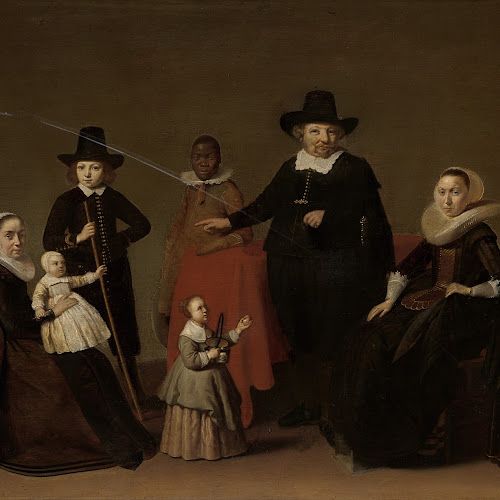
Willem Cornelisz Duyster, 'Family Group with a Black Man', c.1631-1650. Rijksmuseum Amsterdam.
Willem Cornelisz Duyster, 'Family Group with a Black Man', c.1631-1650.
Now see the painting reimagined by Barbara Walker on the left. By choosing to emboss the outlines of the White family, she accentuates the Black man in their midst with the graphite drawing and her reversal allows us to see him an an individual, with a life and story that was never recorded.
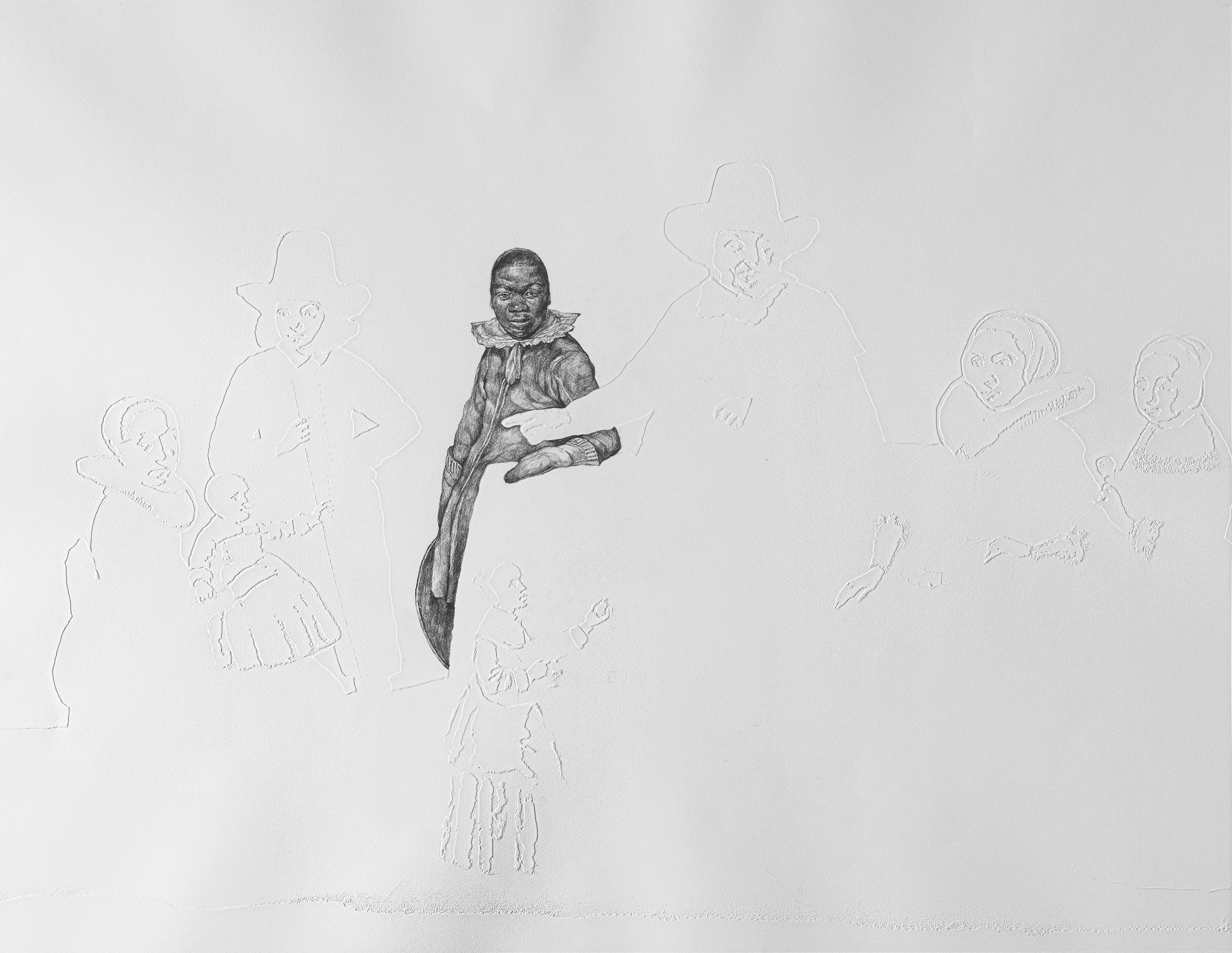
Dancing with poise
In 2020, artist Sokari Douglas Camp was inspired to make her 'Jonkonnu Masquerade' series when she learned about the Jamaican festivals called Jonkonnu where indentured plantation workers celebrated by dressing in colourful hand-me-down clothes. From admiral's hats to soldiers' jackets, and highly decorated headgear, plantation workers celebrated for one precious day each year.
The series depicts enslaved performers wearing costumes referencing the Jamaican Jonkonnu ('John Canoe' in English). The sculpture on display in this exhibition is dressed in an admiral's hat with sugar cane instead of feathers and bedecked with imagery relating to slaved-produced sugar and colonial-style English tea-drinking, whilst dancing on the Union Jack.
"[He] holds his arms tightly behind his back like an Irish dancer, or perhaps like a captive person indicating servitude and compliance? Accounts record how enslaved people were often forced to dance on deck during the lock and horrific so-called 'Middle Passage; voyage as a way to keep them fit."
In 'Black Atlantic', you will find this contemporary work juxtaposed with a pair of torchères-on-stands from c. 1645, once owned by Elizabeth Murray at her stately home of Ham House.
They offer a stereotypical representation of Black people as servants at that time, dehumanising them and placing them in a racist fantasy of African dress that includes feathered skirts, bells and turbans.
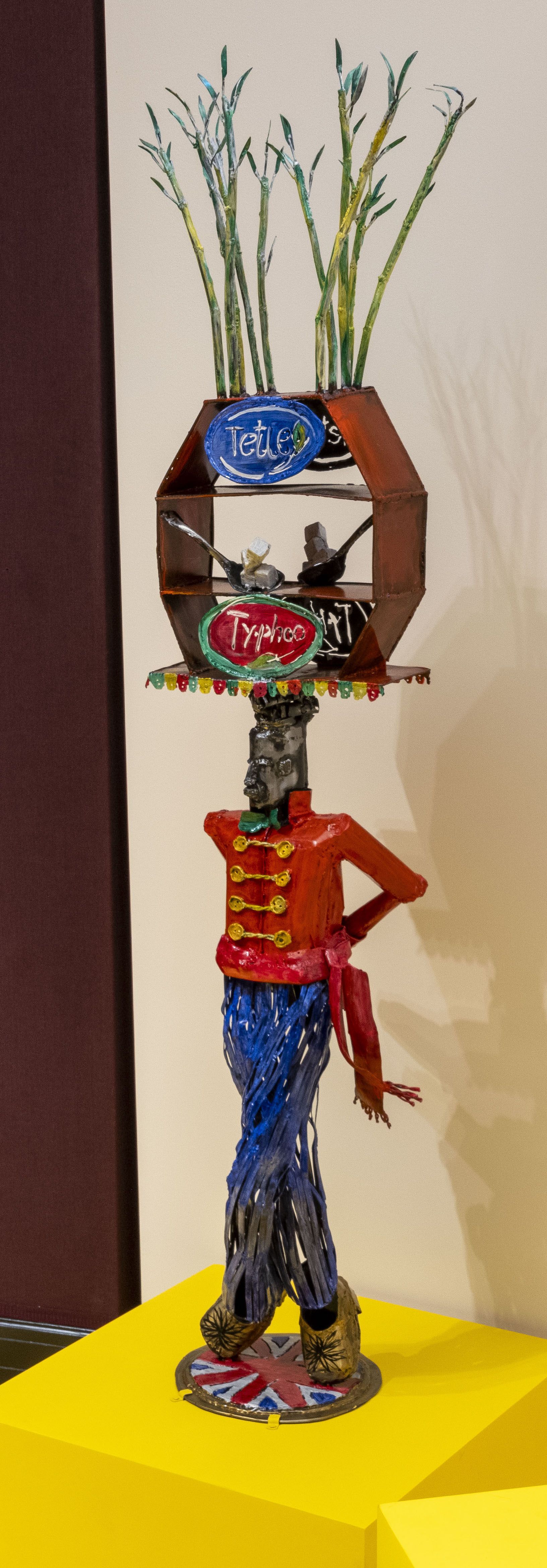
Sokari Douglas Camp, 'Sugar Cane John Canoe', 2021, private collection
Sokari Douglas Camp, 'Sugar Cane John Canoe', 2021
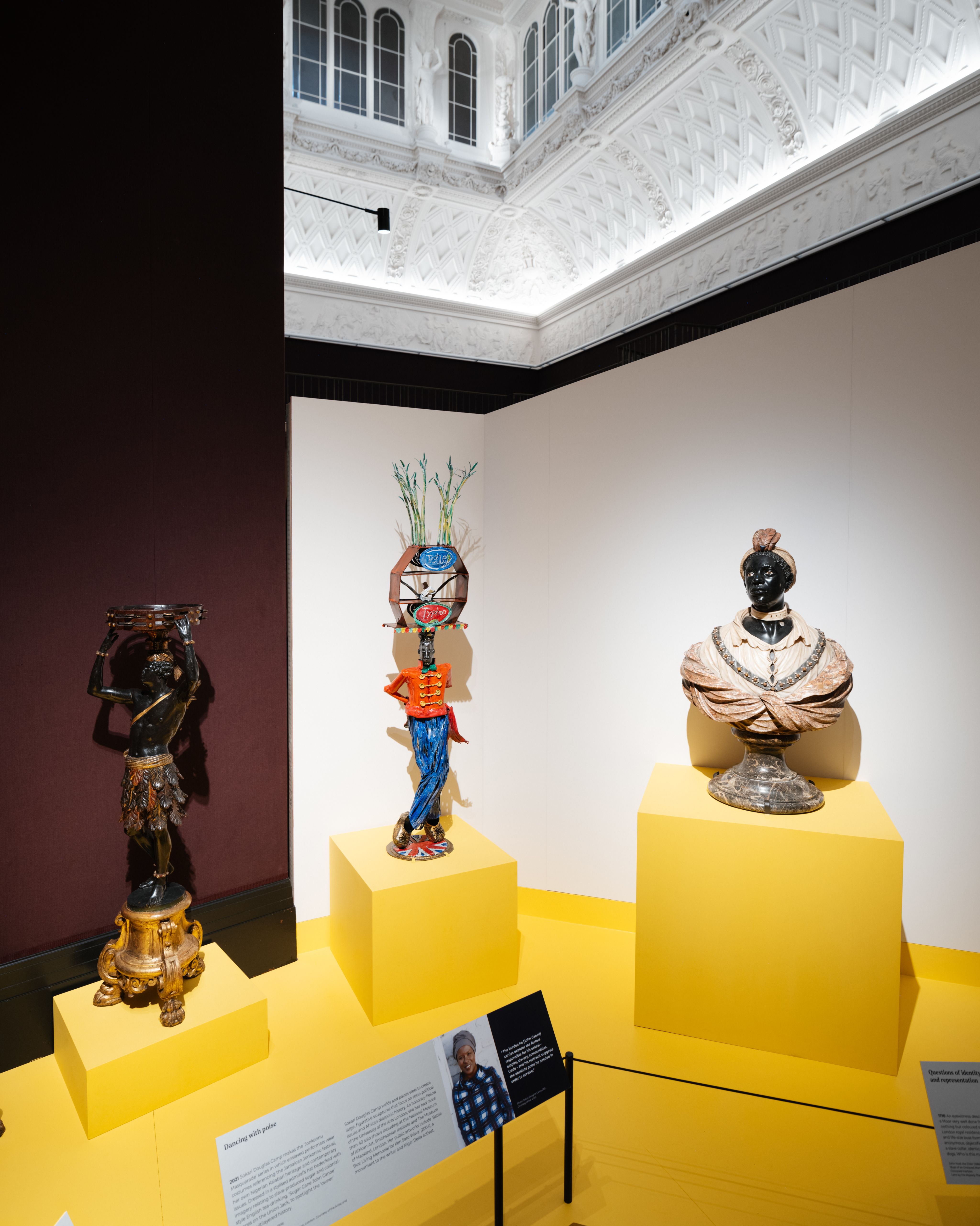
Sokari Douglas Camp, 'Sugar Cane John Canoe', 2021, pictured in the Black Atlantic exhibition at the Fitzwilliam Museum
Sokari Douglas Camp, 'Sugar Cane John Canoe', 2021
Visit the exhibition
'Black Atlantic: Power, People, Resistance' at the Fitzwilliam Museum in Cambridge is free to attend.
The exhibition runs from now until 7 January 2024.
It is the first in a series of exhibitions and gallery interventions planned for 2023-2026. #BlackAtlantic
This exhibition explores themes of enslavement and racism. It includes depictions of slavery and objects linked to violence and exploitation.
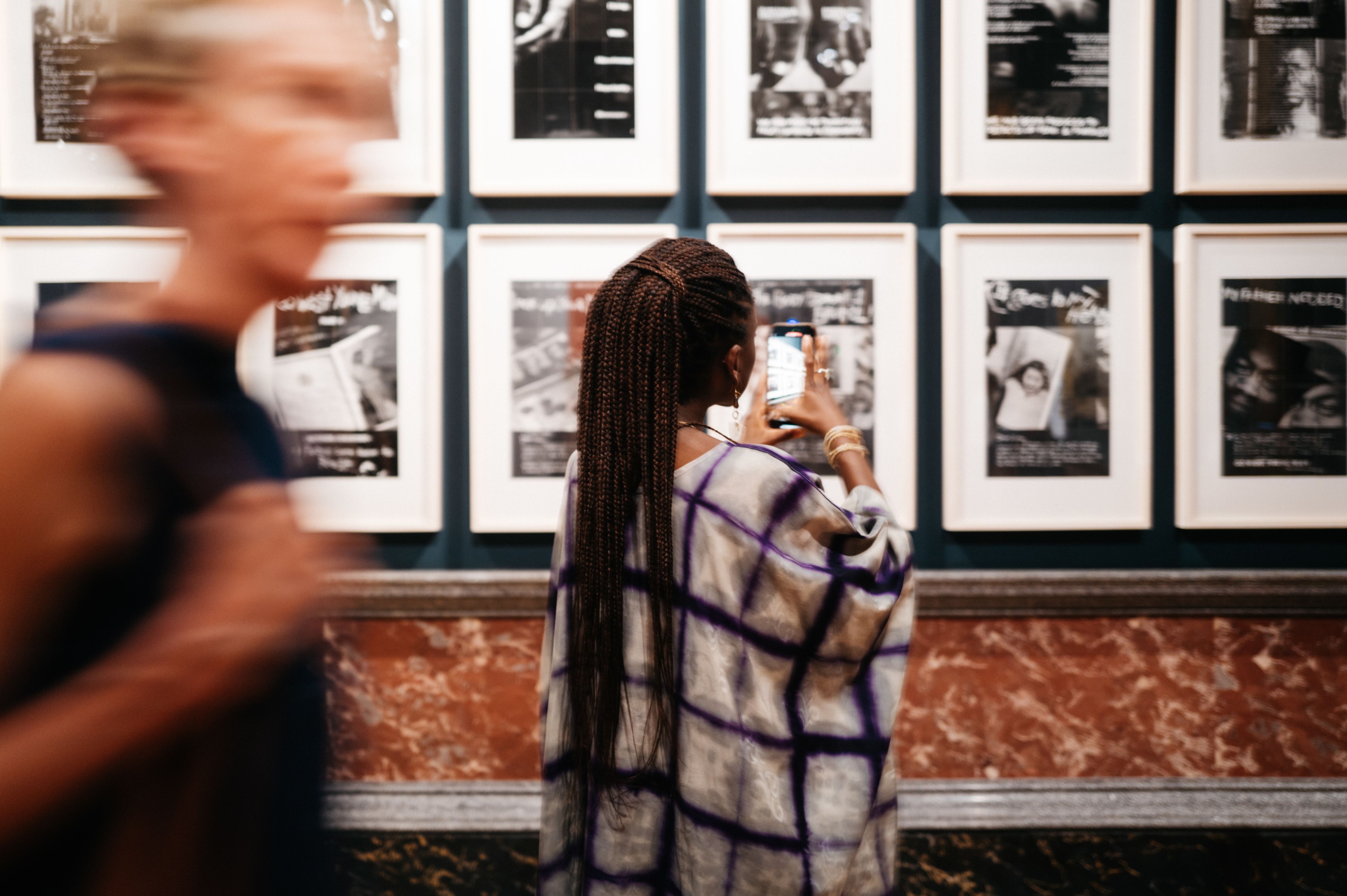
Cambridge's links to slavery
The development of the Black Atlantic exhibition led the Fitzwilliam Museum to new discoveries about the museum and Cambridge’s own connections to colonialism.
Black Atlantic begins by looking at the early history of the Museum and its founder, Viscount Richard Fitzwilliam (1745-1816).
A student at Cambridge, Fitzwilliam left a large sum of money and an extensive art collection to the University upon his death in 1816, founding the Museum that is named after him. Until now the origins of his money have largely been ignored.
This exhibition reveals how a significant part of Fitzwilliam’s wealth and art collection was inherited from his grandfather Matthew Decker, a prominent Dutch-born British merchant and financier who in 1700 helped to establish the South Sea Company, which obtained exclusive rights to traffic African people to the Spanish colonial Americas.
“Reflecting on the origins of our museum, the exhibition situates us within an enormous transatlantic story of exploitation and enslavement, one whose legacy is in many ways as pervasive and insidious today as it was in the seventeenth, eighteenth or nineteenth century.”
The Fitzwilliam Museum and other University of Cambridge Museums acknowledge that they still benefit from Atlantic enslavement in terms of their finances and collections. The Museums have made a commitment to reparative justice. More exhibitions are planned and more research will be published to share new knowledge and to keep debates alive.
We hope you will join the conversation.
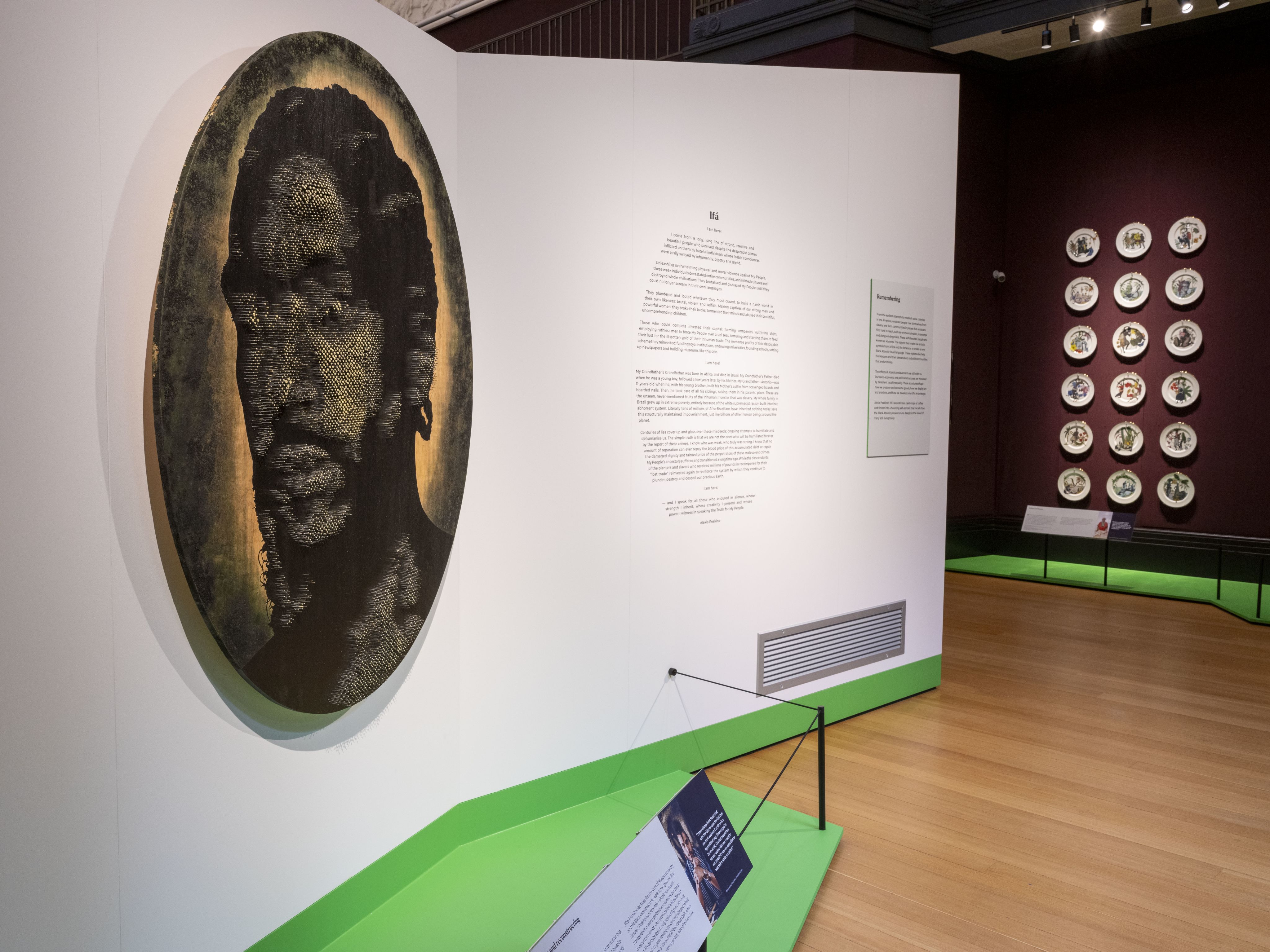
The text in this work is licensed under a Creative Commons Attribution 4.0 International License.